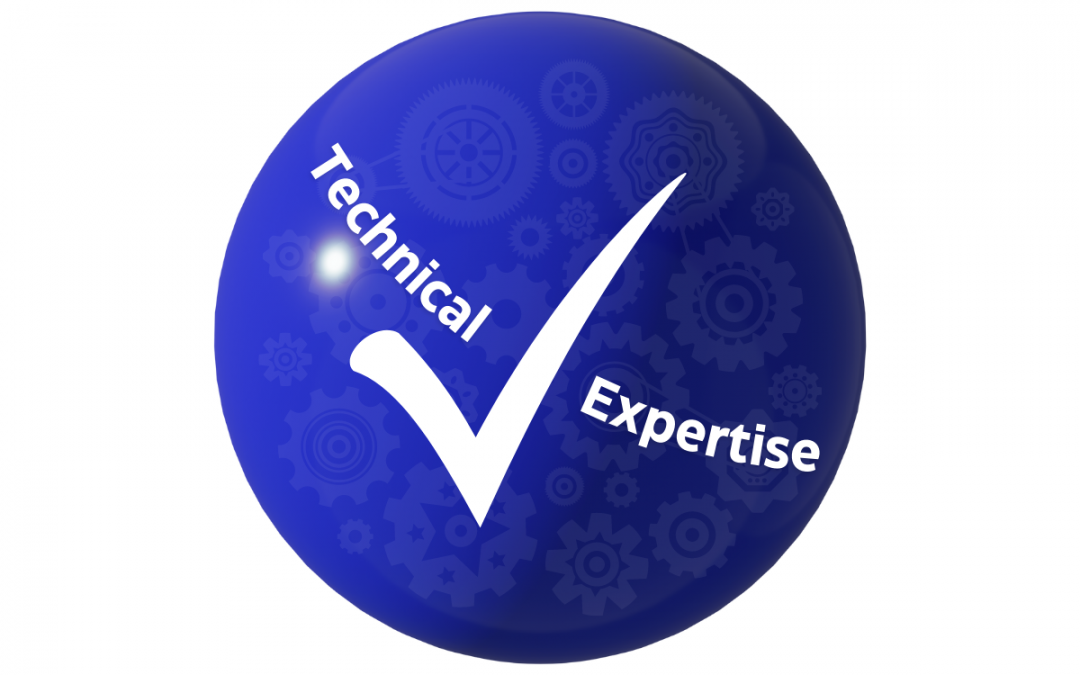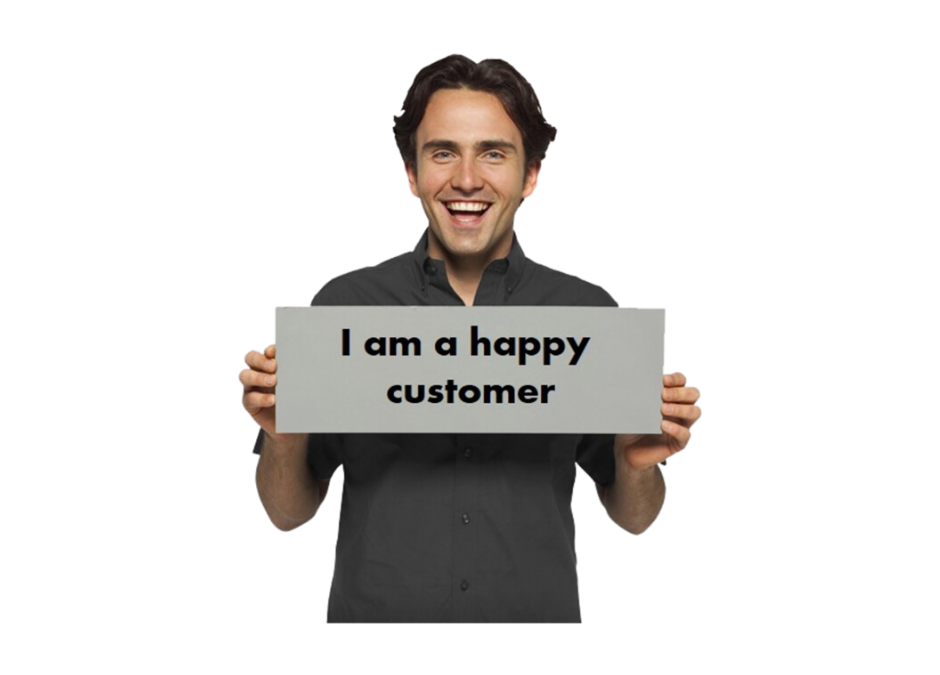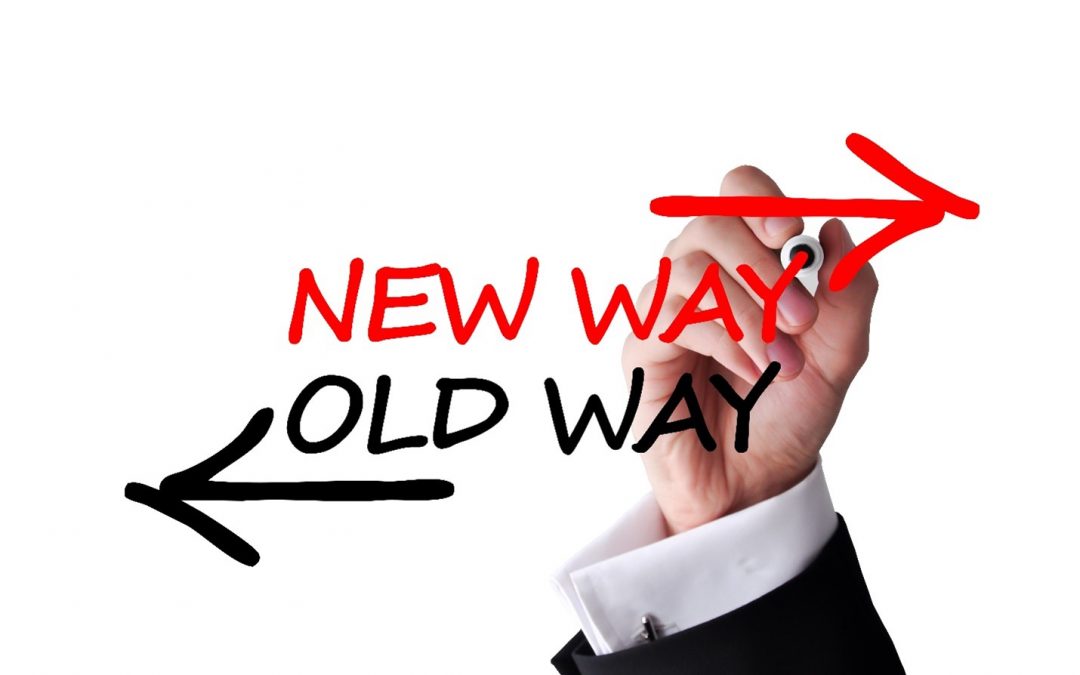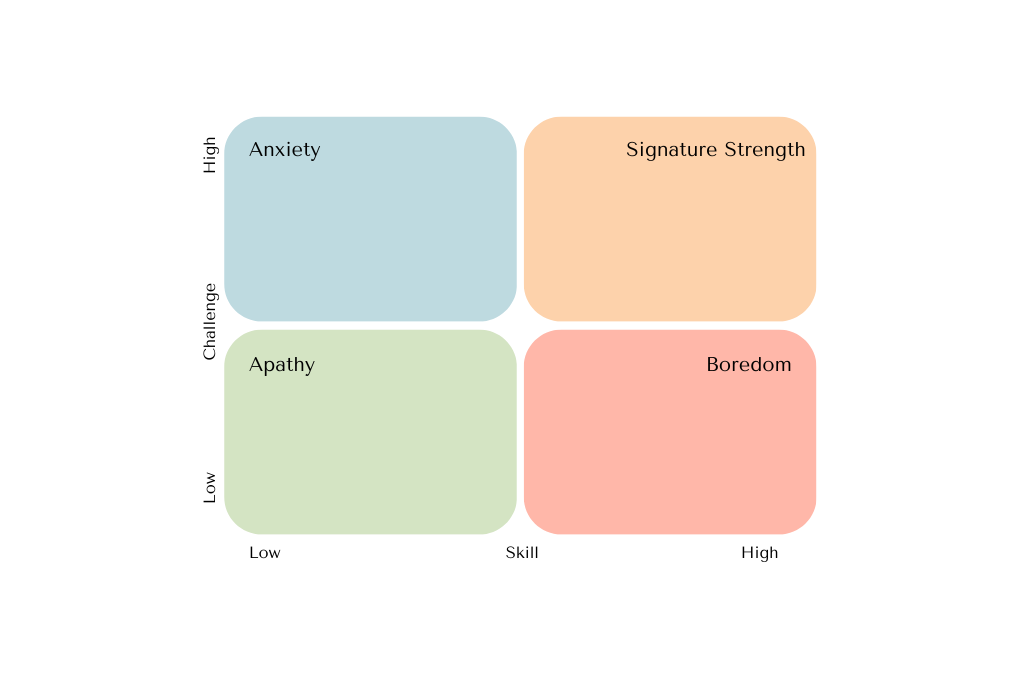
by Art Waskey | Jul 10, 2023 | Art of Sales Weekly, Featured
There is no stopping the impact of economic disruptors on your business. Consequently, supply chains may become tangled, inflation can flare up, and pandemics may emerge. Furthermore, these events, which are mostly beyond your control, significantly impact your pricing. In today’s environment, spreadsheet analysis can’t keep up with the pace of change. Alternatively, your pricing solutions need to be able to address disruptive trends quickly and efficiently.
Solutions
Furthermore, with the current rate of price change, margin erosion is a significant concern for many distributors, even as they make price adjustments. Therefore, how can a distributor stay on top of the pricing of thousands of SKUs in the face of economic disruption?
Here are three important suggestions.
- Build company culture and team support – To ensure pricing is a team effort, your CEO must solicit cross-functional pricing communication support throughout the organization. As a company, you must recognize where you are going and develop a pricing strategy accordingly. This process must involve many people to ensure a collective buy-in. To make the process more collaborative, all players should contribute to setting pricing, structuring contracts, and determining customer-specific pricing (CSP).
- Communicate — Set Key Performance Indicator (KPI) benchmarks and communicate results every month throughout your organization. Share the company’s vision of growth with all team members, and alternatively, managers should personally connect with the sales team and branch stores for feedback. Celebrate exceptional performance and offer coaching on various aspects, including the current pricing status, changes in pricing strategy, adoption rates, and optimized profit results.
- Integrate data-based pricing – Use digital analytics to minimize inefficient and time-consuming CSP. Undoubtedly, the backbone of your pricing should be a Pricing Profit Optimizer that sets the lowest and highest acceptable margins. Moreover, put pricing back in the proper zone for the customer and the market so sales reps don’t need to use overrides. Ensure your sales team knows management is in contact with customer needs. Get CSP under control.
Be Prepared
In conclusion, economic disruptors are part and parcel of today’s business environment. Be prepared to offset any negative impacts with smart pricing solutions that are responsive to rapid or sudden changes.
Get tips and tricks like the above in The Art of Sales books. Or subscribe to the FREE monthly articles here.

by Art Waskey | Jun 26, 2023 | Art of Sales Weekly, Featured
With digitization has come rapid change in how we view and analyze pricing decisions. It is no longer viable to price on a set-it and forget-it basis. The many factors impacting pricing can now be analyzed with data-driven programs. Today, data is critical to your pricing strategy.
Factors to Consider
Here are a few factors to consider when setting your pricing strategy.
Consistency — Is your pricing consistent across platforms? Do your customers get different pricing from the Outside Sales Rep (OSR), Inside Sales Rep (ISR), eCommerce orders, Customer Service Rep (CSR), and/or counter store reps? Do your salespeople know how the pricing works?
As senior vice president of sales, I would field calls from OSRs. They voiced their dissatisfaction regarding the inconsistency in charging customers the quoted price during store pick-up. Furthermore, the issue extended to products that were substituted for the originally quoted ones.. If your pricing is inconsistent, less scrupulous customers can play one employee against the other, costing you money.
Pricing overrides – Human nature comes into play in pricing consistency. Whether retail or wholesale, we tend to migrate to the contact we think will give us the best price. When the client states they are a large user, do your reps override pricing guidelines and offer inappropriate discounts?
Customer contracts – Are your customers using their contract pricing effectively? Is the pricing in a viable metric? Given the complexity of today’s marketplace, OSRs are no longer in a position to set good customer-specific pricing (CSP).
It is no longer realistic to “set it and forget it.” The “discounting from list” strategy isn’t reactive in today’s dynamic digital marketplace. Hard-loaded fixed pricing policies should no longer be used. Given the environment of the last couple of years, fixed pricing can rapidly lead to instant margin erosion.
If 60% of your revenue is set by CSP, analyze where your sales dollars are coming from to ensure the correct margin. Know your renewal dates. Find out where the product volume is flowing. Evaluate the price points, especially on the most expensive products, and manage your customer contracts.
A Dynamic Pricing Strategy
Remember, technology has changed the dynamics of pricing strategy. When calculating price outcomes use digital tools to be able to consider the many factors, like price inconsistency, that impact your bottom line.
Get tips and tricks like the above in The Art of Sales books. Or subscribe to the FREE monthly articles here.

by Art Waskey | Jun 19, 2023 | Art of Sales Weekly, Featured
Technology has changed the dynamics of pricing strategy. With digitalization, information is now readily available to measure customer performance. Additionally, analyzing price increases is now a data-driven process.
Calculating Outcomes
Consider these elements when calculating pricing outcomes.
Customer segmentation – Make sure your customer segmentation is based on data, not personal emotions. Considerations for segmentation should focus on revenue and gross margin. Pricing shouldn’t be influenced by the emotions of an outside sales rep (OSR), inside sales rep (ISR), store manager, or customer service personnel. Moreover, the top revenue generator for one OSR’s territory may not be one of the company’s top 20 customers. Consider grouping your customers into four categories — A through D — with A being your top performer with the best pricing. Check to make sure your customers are in the correct pricing category based on revenue and gross margin.
Cost of service — Sales revenue and gross profit percentage are not the only considerations. You also need to look at the cost of service. Review how promptly the customer pays their bill. Is the customer that is past due 60 days priced accordingly? How many returns are you processing for the customer each year? Does a specific customer require ongoing training, technical service, or an inordinate amount of other types of interaction? However, these are all costs to your bottom line. They should be quantified and considered in price adjustments.
Customer type and geographic location — Customer type and location affects pricing. Examine how customers use your products and how that affects what you can charge. Use these and other types of considerations in your pricing structure. For example, the greater the distance from a major market, the greater the distribution cost. Pricing should correspond to this. Customers with multiple locations in different markets also need special pricing considerations. Use digital analytics in your pricing evaluation process.
Let Data Drive Pricing Decisions
Lastly, information on customer segmentation, cost of service, and customer type and location all reside in your software systems. Use that data to drive your pricing decisions and create a sales strategy that is responsive to today’s market dynamics.
Get tips and tricks like the above in The Art of Sales books. Or subscribe to the FREE monthly articles here.

by Art Waskey | Jun 13, 2023 | Art of Sales Weekly, Featured
Trusted Advisors
We are all aware of how challenging the rapid pace of sales is in today’s digitized market. Also, changing customer expectations require adopting new approaches to sales that merge traditional relationship selling techniques with digital eCommerce solutions. Sales strategies like Enterprise Selling encourage the salesperson to become an expert in each customer’s needs.
By leveraging digital product information accessibility, sales representatives gain the ability to identify issues that may go unnoticed by the clients themselves. This enables them to become trusted advisors by deepening their product knowledge and comprehending customer needs. Consequently, they deliver a heightened level of expertise, facilitating more efficient customer journeys toward desired outcomes.
Time is Currency
Customer expectations have undergone a significant change, with a strong emphasis on an improved customer experience. This shift is fueled by the need for instant transactions online. Time has now become a valuable currency. Additionally, to make the most of your time and successfully close deals, leverage technology to bridge the knowledge gap. Sales representatives must excel in digital selection, organization, and professional presentation. Explore automation options to streamline the process and save time. By doing so, you elevate your expertise and deliver a higher level of service.
The Right Technology Partners
When selecting your technology platforms, establish clear goals and ensure that your consultants can meet those expectations. Utilize similar distributorships as sounding boards to gather recommendations for proven technology partners. Additionally, examine the outcomes of early technology adopters and learn from their experiences. Implement necessary changes and leverage the right technology partners to facilitate user acceptance of newly introduced processes that your associates may initially hesitate to adopt.
Reach For The top
In conclusion, addressing new customer demands with the right technology allows you to provide a high level of expertise. By reaching for the top you can get customers to endpoints more efficiently.
Get tips and tricks like the above in The Art of Sales books. Or subscribe to the FREE monthly articles here.

by Art Waskey | May 30, 2023 | Art of Sales Weekly, Featured
Digitization
Digitization is the name of the game in today’s fast-paced world of sales. Technology options can seem overwhelming but to be competitive you have to continually up your digital IQ.
Four Recommendations
Here are four recommendations to help you achieve the highest level of tech expertise.
- Don’t be afraid to start. New technology can be overwhelming but you need to dive in. When the company I was with built its first high-pressure cylinder control system (a system for verifying cylinders at customer locations), it failed miserably. Our president complained about the time and energy wasted but I saw it as a valuable learning experience. Thirty years later that company has a cylinder control system faster than most of its competitors and developed for less money.
- Focus on the most needed areas. Your technology IQ focus should be on those areas that promise the greatest return on your investment. Some companies start on the backend — inventory, and accounting — with an ERP system. Others start with their CRM. The distributor I was with started with a CRM 30 years ago because it was available at an affordable cost. The company moved on from the original provider after a few years to a CRM that had a better understanding of its industry.
- Establish your KPIs. You need to identify what kind and level of information drives your business and establish your KPIs accordingly. For some parts of the business, you may need to outsource your data analytics. This can be done without spending large sums. In other cases, you will want the analytics generated in-house. Hire IT techs as needed and check progress against your KPIs.
- Prioritize. In a world full of technology options you need to be able to prioritize. Look for what is most important for your company to digitize. Spend time and set aside a budget for some experimentation so you can find the systems that will transform your business most effectively.
Stay Competitive
Remaining competitive in today’s market requires a high technology IQ. Don’t be afraid to start, focus on technology that promises the greatest ROI, and establish KPIs that address your digital goals.
Get tips and tricks like the above in The Art of Sales books. Or subscribe to the FREE monthly articles here.

by Art Waskey | May 22, 2023 | Art of Sales Weekly, Featured
The best measure of performance is a satisfied customer. Today’s digital business practices enable swifter transactions. However, they can be a stumbling block when it comes to addressing customer concerns and satisfaction. For example, I recently tried to resolve an issue with my internet and TV provider and was connected to an automated digital agent. Following prompts, I typed in my problem only to receive a list of online tutorial solutions. I did not make any actual human contact during the session, and I ended up feeling frustrated as my problem remained unsolved. This begs the question, how can we better serve our customers in today’s business environment?
The Personal Touch
We all know that customer frustration is bad for business. The good news is that, as independent distributors, we have the ability to do business in a better way. While alternative channels have caused us to move more interactions online to remain competitive, we are still in touch with customers on a much more personal level than the big guys. This allows us to create better digital pathways targeted to our customers’ needs. Using our resources to optimize performance, we can answer questions better than an automated agent. We can provide the personal touch.
Increasing Shareholder Value
Protecting the integrity of your shareholders, from base-line employees to customers, is a great way to optimize performance. Everyone, from your warehouse worker to the chief executive, is in a position to help improve the efficiency of the company. This puts you in a position of great flexibility when it comes to problem-solving. With employees focused on operational excellence, you will realize increased revenue and bottom-line growth.
Service
Lastly, In today’s fast-paced business environment, the surest path to a satisfied customer base is made by providing the best service. Make excellence in serving your company’s priority.
Get tips and tricks like the above in The Art of Sales books. Or subscribe to the FREE monthly articles here

by Art Waskey | May 15, 2023 | Art of Sales Weekly, Featured
Happy employees create happy customers. Don’t let employee complaints reach your customers’ ears. Optimize employee performance by providing your team with the best resources.
The Right Technology
One of your most important performance-optimizing resources is your CRM. Meanwhile, make sure it is up-to-date. With the right digital tools your workforce can harvest data that allows them to do their job better. Be sure your team has useable analytics tailored to your customers’ needs. Remember, more data isn’t necessarily the right data.
Look at your tooling. How many clicks does it take to get the user to the right information? Make sure the accounts receivable department is getting to their sales counterparts in a timely manner. Also, you don’t want collection issues to mount up. The right ERP system removes the silos that so often slow down distribution.
Keep in mind that the upcoming generation of customers is used to quick order fulfillment. Today’s consumer expects Amazon-like results. Furthermore, people expect their B2B services to be as accessible as the B2C services they are accustomed to. Keep your eCommerce solutions current to optimize performance.
The Value Stream
Focus on your value stream for a happier customer base. Everyone in your company can influence your success in a positive way if they are equipped to do so. Additionally, ask your team members, “What is the most difficult part of your day?” Find out what would make their job easier then give them the tools they need. Happy employees can show you ways to produce optimized solutions.
Peak Performance
Aligning your technology with the needs of your shareholders is absolutely crucial for achieving peak performance. Offer something that the large verticals can’t match — a collaborative customer experience. Make sure your employees have the resources they need to provide excellent customer satisfaction. Happy employees make happy customers and a secure revenue base.
Get tips and tricks like the above in The Art of Sales books. Or subscribe to the FREE monthly articles here.

by Art Waskey | May 1, 2023 | Art of Sales Weekly, Featured
In the Digital Era
Traditional relationship skills as well as AI technology are necessary for successful selling in the digital age. The ability to identify customer needs has always been a requirement for sales representatives. Also, AI technology enables reps to do that quickly and efficiently by analyzing customers’ previous transactions and preferences. As a result, Combining AI data with traditional relationship-selling tools is a new way to win business and reps need help adjusting to this change.
Action Items
Furthermore, your sales team needs to have guidance navigating this new world of technology applications. A recent press release from Gartner recommends company Chief Sales Officers explore the following actions to successfully evolve a hybrid sales strategy:
- Bring together sales and marketing leaders to set a multichannel strategy for customer learning paths, including account-based campaigns and digital sales playbooks.
- Rethink the role of digital engagement by building digital sales tools for real-time collaboration with customers.
- Equip sales reps with probing questions and decision support tools to help buyers learn more effectively and make confident decisions.
What to Include in Your Strategy
According to Kevin McGirl, President and Co-Founder of sales-I, with the use of AI intelligence, your sales strategy can include:
- Customer behavioral information. Current data predictive analytics can provide an understanding of each customer’s interaction preferences. Additionally, this behavior identification makes it easier and faster to communicate added value to the customer’s specific needs.
- Increased sales competency. New and/or inexperienced field sales reps can be supported by faster product and selling skills assistance through advanced digital technology. Consequently, “How to” information and training for reps on their smartphones can ramp up capabilities quicker.
- Broader information and conversation points. Altogether, proactive information covering the rep’s territory and customers can be more efficiently and effectively accessed.
Combine Techniques
In conclusion, help your sales team adjust to changes and new ways of selling. Show them how to combine historic trusting relationship skills with current AI technology and watch them succeed.
Get tips and tricks like the above in The Art of Sales books. Or subscribe to the FREE monthly articles here.

by Art Waskey | Apr 25, 2023 | Art of Sales Weekly, Featured
Motivation and Restraint
John Grisham is one of my favorite writers. I only read his books on vacations because once started, I can’t stop. As a weekly sales and leadership writer I have to spend a lot of time on business podcasts, webinars, whitepapers, and associated books. If I get started on a good leisure time book, I don’t have the discipline to put it down. To remain motivated to meet my weekly goal of written projects, I have to exercise restraint with leisure reading.
Motivation and Success
Motivational stories inspire us. We admire J.K. Rowling (single mom struggling to make ends meet who wrote the Harry Potter books), Steven Spielberg (who snuck into a filming of a real movie at the age of 17 while on a tour at Universal Studios), and Dolly Parton (the fourth of twelve children in a one-room cabin in Tennessee).
Grisham’s fictional book, Sooley, concerns a 17-year-old war-torn South Sudanese boy who fights his way out of depravity with a basketball. Sooley’s goal of playing basketball in America pushes him to succeed. He exemplifies how motivation leads to success.
Key Motivators
The motivational stories above all have two important themes:
Goal achievement – Norman Vincent Peale said, “No one can get anywhere unless he knows where he wants to go and what he wants to be or do.” Numerous studies have shown only three percent of the population set goals and only about one percent write them down. To achieve your goals, it is important to identify them. I make a list of my dreams each year and this has led to many achievements. In my 40s, I became a Distinguished Speaker. My 50s were dedicated to becoming a published writer and I wrote 3 books. I went back to school in my 60s to earn a Master of Ministry degree. Now in my 70s, I write weekly, consult, and travel the country speaking.
High motivation – Success requires an enormous amount of motivation. To boost your level, surround yourself with motivated people. Their energy is contagious. If you are part of a motivated team, your achievement level escalates. You can do anything if you set goals. As Walt Disney said, “All our dreams can come true if we have the courage to pursue them.”
Move Toward the Prize
Don’t wake up tomorrow realizing you are in the same place as you were yesterday. Motivate yourself. Clearly identify your goals and then focus your time and energy on moving in the direction of the prize – your success.
Get tips and tricks like the above in The Art of Sales books. Or subscribe to the FREE monthly articles here.

by Art Waskey | Apr 20, 2023 | Art of Sales Weekly, Featured
Core Strength
A highly successful independent technical specialist recently contacted me for help. His dilemma — he was bored and this left him anxious. My first question to him was: “If you were to hit the lottery, what would you be doing?” The answer to that question often reveals a person’s core signature strength. That strength is activated when the challenge you face matches your personal skills.
Greatest Skill
My client revealed that the most fulfilling time in his life was when he was a sales manager for a regional distributor. His ability to coach salespeople to high levels of achievement was his most rewarding challenge. That skill brought him the greatest career satisfaction and is, to this day. his signature strength.
Utilizing Strength
While my client is successful as a technical specialist, that work does not utilize his greatest strength. As the matrix above shows, he is challenged by the application of his technological skills, but his signature strength of coaching a sales team is not engaged. This leads to his boredom.
Syncing Challenge and Skill
As a youth, I discovered I was gifted in mathematics. This led me to study engineering. As a welding engineer, however, I wasn’t happy at a desk working on projects. While I was good at engineering, the job left me anxious. Fortunately, I met a man who recognized my greatest skill was in working with people. I took a position as a sales engineer with his company and, in short order, became a sales manager. Soon, I was promoted to vice president of sales. In that position, I used my signature strength of working with people. When my challenge and skill were in sync I found job fulfillment.
The Merger
Using programs I have developed, I am now teaching my technical client how to regain job fulfillment by employing his signature strength of coaching young sales leaders. There is no greater satisfaction in life, than using your signature strength to find a good challenge and merge it with your greatest skill.
Get tips and tricks like the above in The Art of Sales books. Or subscribe to the FREE monthly articles here.










